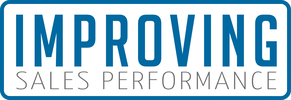 There's an old folk saying that goes like this: "Never forget where you came from, because when you do it's a long road home." That's great advice in general, but especially for a salesperson. After all, long before you were in the sales business, what were you? A customer, right? And obviously you still are in most aspects of your life. So if you want you (and your team) to be more relatable, to sell with more confidence, and to take business to the next level, it's time to rediscover what it's like to be a customer. And not just any customer, but your own customer. Optimize your customer experience by putting yourself in your customer's shoes. Circle back to how your customers are really experiencing your brand, and your product/service offerings. Now, don't get me wrong. We're not talking about some vague mental exercise here. If you really want to tap into the power of customer-centered empathy, guide your team through an actionable process. Dig deep into the customer experience with these three steps. Step #1: Realization (Think of Yourself as the Customer) It's absolutely vital that you, as a salesperson, constantly remind yourself of what it's like to be a customer. Granted, a lot of companies use buyer personas to help them identify "target consumers." These semi-fictional profiles certainly have their place. However, as a salesperson on the "front lines" of your business, you need to go deeper than demographics and the surface level of a persona's hypothetical sales journey. For instance, think about your own customer experiences. Ask yourself questions like:
Write down the answers to these and similar questions. Then, spend some time analyzing those answers for actionable insights. And don't stop there! Get different perspectives from your friends, colleagues, current customers and past customers. Schedule a team meeting, and ask your employees to prepare examples they can share to educate and inspire the entire team. Have an open dialogue with one another. Encourage creative thinking. Collaborate. Training yourself and your sales team to really "step into the customer's shoes" is the first step toward optimizing the customer experience and growing your business. In fact, a whopping 86 percent of customers say that they're willing to pay more if it means getting a better customer experience. Chew on that for a moment! Step #2: Processing (Identify What's Important to Your Customer) Now that you've gathered quite a bit of data from the "realization" stage, it's time to organize and filter that data into meaningful patterns. Use plenty of questions during this second step to honestly assess the strengths and weaknesses of your product/service offering. Think of yourself as a guide. If you were in the buyer's place, how would you want to be guided along your journey? What would be most helpful to you? What would help create a memorable customer experience? For example, think of the following points:
As you process the information you've gleaned from the "realization" phase of this process, you'll no doubt discover new insights about both your customers and your brand. Step #3: Action (Make the Customer Experience Better) Finally, it's time to take your research and turn it into results. Develop a workable plan of action to implement the insights and opportunities you've discovered. As an example, think about how you could use the information from the previous two steps to improve the customer experience during a sales call. Ultimately, there are three elements of a great sales call — but how can you achieve them?
Keep Learning. Keep Growing. At the end of the day, the three-step process that we've discussed will help you to stay aligned with your values, your company's mission, and the needs of your prospects. Basically, it's a powerful way to "remember where you came from," and grow from the experiences you've shared (and still share) with other consumers. For more SMB insights and advice, sign up for our newsletter, contact us or visit our website for valuable business resources and webinars.  Compensation is essential in managing, motivating and retaining a sales force. A great sales executive compensation plan accomplishes quite a lot. It provides fair compensation to the sales executive, incentivizes specific actions and behaviors that suit the organization's needs, and motivates employees to hit set goals. Today's sales executive wants a challenging job with a clear path to match his or her performance based on what he or she can directly impact and control. They want employers to recognize their performance with rewards that increase as their impact on the organization increases. What is fair compensation for a sales executive? Unfortunately, there's no one-size-fits-all answer. Instead, gear your sales compensation plan toward what is right for your company. Design it to influence the outcomes you want, and align it with your SMB sales executive's strengths and motivators. Here are some guidelines to think about. Sales Compensation Plan An effective compensation plan will drive your sales team's performance. It includes details about all aspects of your sales team's earnings, such as salary, commission, benefits, incentives they are eligible to receive, and on-target earnings (OTE). OTE is a metric that helps forecast the total potential compensation of a specific position when a team achieves all the set performance targets. It is common in sales compensation plans since it's a contract that guarantees a particular commission percentage.
You need a comprehensive compensation plan for all your sales team members based on their role, experience, the type of deals they handle and the sales cycle's length. Consider these factors:
Factors that Affect Your Sales Executive's Compensation Plan Determining compensation for your sales executive is challenging. You must consider several factors in your plan, including experience, the current market and the business sector. How long will it take to train and bring them up to speed? Do they bring their own book of business? Here are five factors to consider when creating your compensation plan. 1. Determine if You Have a Farmer or a Hunter. Hunters love chasing down leads and finding opportunities. On the other hand, farmers cultivate leads and opportunities and grow existing accounts to generate revenue. Making this distinction will help you select the right person for a sales executive position and determine compensation. How do you know if you are hiring a farmer or hunter? There are certain soft skill sets associated with each. Try giving candidates sales assessments during the recruitment and hiring process. Here's what I mean. Hunters tend to be outgoing, risk-averse and motivated by recognition. They are typically self-managed and able to operate independently. Their ability to bet on themselves makes packages with a high degree of variable compensation desirable for them and their employers. Farmers excel when they can grow relationships, create ongoing value and connect with the same clients year after year. They thrive on driving customer loyalty and creating long-term value. Farmers are more security-oriented than their hunter counterparts, making a base salary and small variable compensation structure more attractive for them. 2. Incent Based on the Degree of Control. This method holds sales executives accountable for things they control. For example, if a sales executive influences a sale alone instead of enlisting help or delegating tasks to their team members, they qualify for higher incentive compensation. To implement this sales compensation plan, determine what variables the sales executive can control. Will they close sales or open doors for their sales team? For sales management, consider whether they can increase the sales team's closing rates, impact KPIs, affect Customer Relationship Management (CRM) adoption or decrease the sales cycle. These tangible metrics help measure the impact of their work and determine their compensation. 3. Reward Successful Results with Variable Pay Plans. Variable or incentive pay plans refer to pay that sales executives earn beyond their regular salary. It is not a guarantee, and you only pay it if the sales executive achieves his or her goal. Those goals are tied to tangible metrics such as sales growth, profits or productivity improvement. Variable pay plans allow you to reward your sales executives for attaining successful results. It also controls compensation expenses when they don't achieve good results. These plans motivate your sales team's performance, encourage them to meet their specific job role's goals and any measurable targets you associate with their compensation. For example, their plan might be based on an individual sales quota for their team if they are responsible for sales team management. Here are four main types of variable pay.
4. Work Back from the Revenue Targets Using OTE Start with the goal or objectives in mind. When you work backward from your sales executive's revenue or success targets, it will help you determine an appropriate compensation package for them. On-Target Earnings (OTE) provide you with a realistic view of what your sales executive's total compensation would be when they reach their expected (and reasonable) quotas and goals. OTEs could include the base salary plus the realistic commission from closed deals. You can use this metric to determine your employees' total potential compensation when they achieve their performance targets. For example, if your OTE is between $200,000 and $250,000 annually, the basic salary could be between 70 and 80 percent ($140,000 to $200,000). You could base the rest of the OTE on performance, which you could pay annually, quarterly or monthly. Start Creating Your Compensation Plan An effective compensation plan is vital to the success of your team. Commit to continuously evaluating your plan to match the changing business climate and the outcomes you want to achieve. For more SMB insights and advice, sign up for our newsletter, contact us or visit our website for valuable business resources and webinars. |
Meet Me
Archives
April 2024
Categories
All
|
|
We are headquartered in Colorado with domestic and international teammates and clients. Please use the contact form on this page to inquire about any of our books, podcasts appearances, speaking engagements and workshops, any of our offerings, or simply to connect.
|
© Improving Sales Performance. All Rights Reserved.


 RSS Feed
RSS Feed
